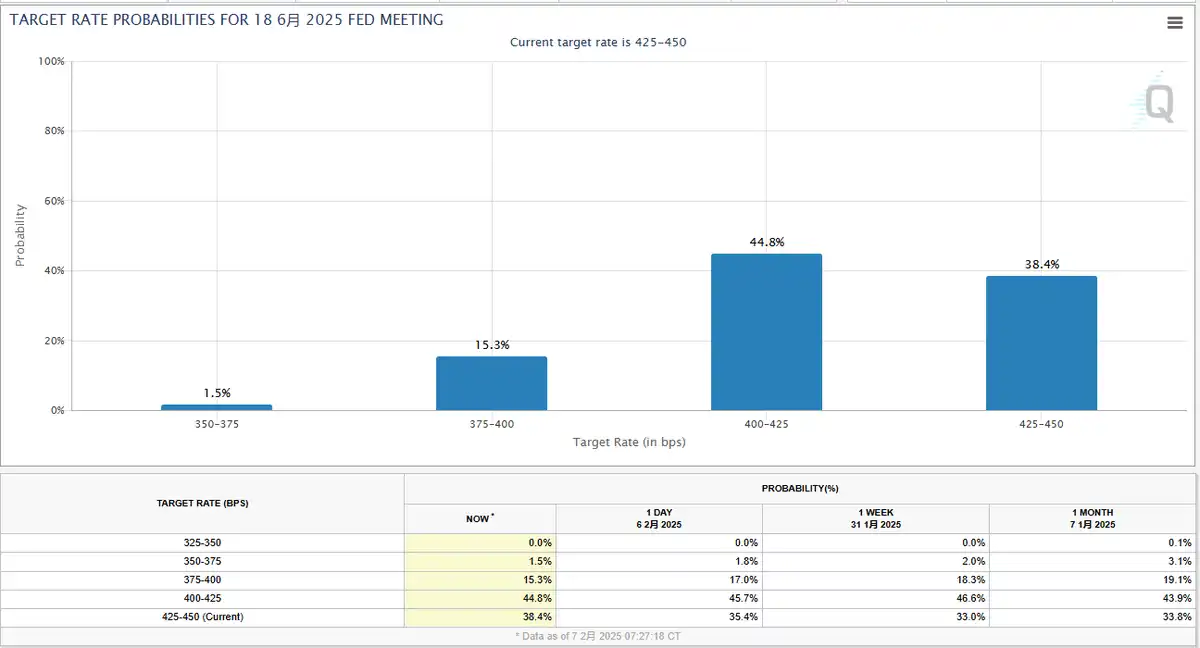After Trump took office, there was no significant policy promotion for the Altcoin market. Apart from the WLFI family fund constantly buying coins, there were also some scandals, with "possible collusion with the project party" as market makers; Trump's son shilled and bought ETH, and the fund "is suspected of secretly cashing out" ETH. The Trump administration's pressure on the SEC to cut interest rates also did not work, and the government agencies such as the Cryptocurrency Committee that were established were all sound and fury, signifying nothing.
Instead, the Trump administration's macroeconomic policy of a strong US dollar and weak US stocks had a huge impact on cryptocurrencies. The back-and-forth of imposing and then delaying the cancellation of a 25% tariff on Mexico and Canada made the Altcoin market turbulent, and even more deadly was that when BTC rebounded, the Altcoins "fell without rising", with most Altcoins hitting new lows in nearly two years.
Many people are wondering: is the bull market still there? In this cycle, the current situation is that the Trump-named meme coin has created a myth of getting rich quick, and the call for an "eternal bull market" after Trump took office is reminiscent of the myth of getting rich quick with SHIB and the Coinbase listing in the last bull market, which seems to be no different from grasping at straws. Is the bull market really still there? Will the Altcoins have a "day of redemption"? Let's see what the traders think.

Technical Analysis
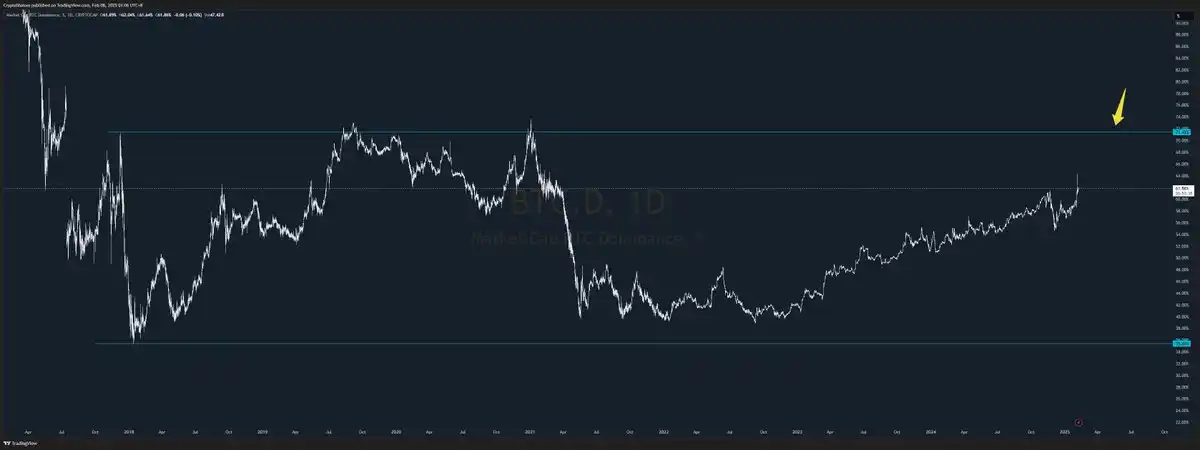
The liquidity of Altcoins has not yet returned, and more Altcoin liquidity has chosen to exit and enter the liquidity of BTC.
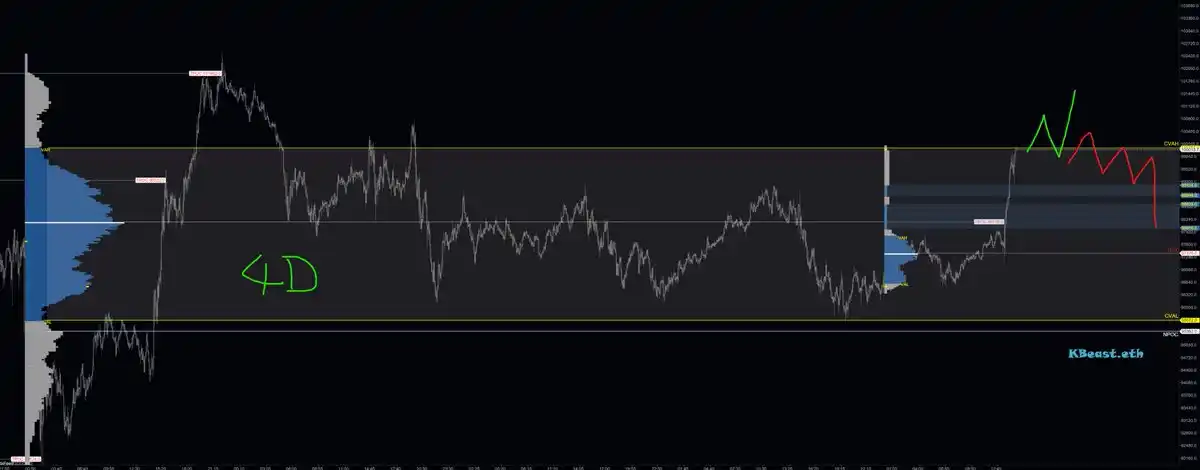
The two possible paths previously recognized seem to have taken the second one.
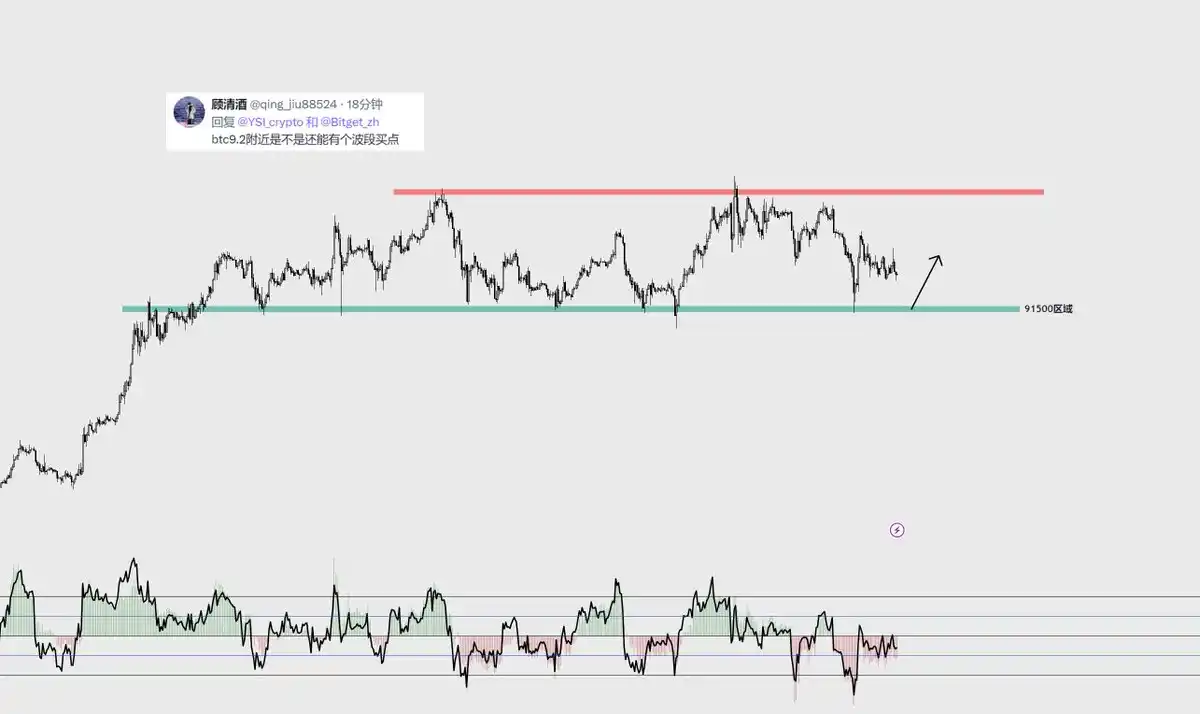
Around $92,000, this is the green area I drew in my chart. This belongs to the lower boundary of the entire Box range, and if the price rebounds here, it can be used as an entry point, and stop loss if it breaks through. Currently, this is in the middle of the Box, and both the bulls and bears are suffering, waiting for the right entry opportunity.
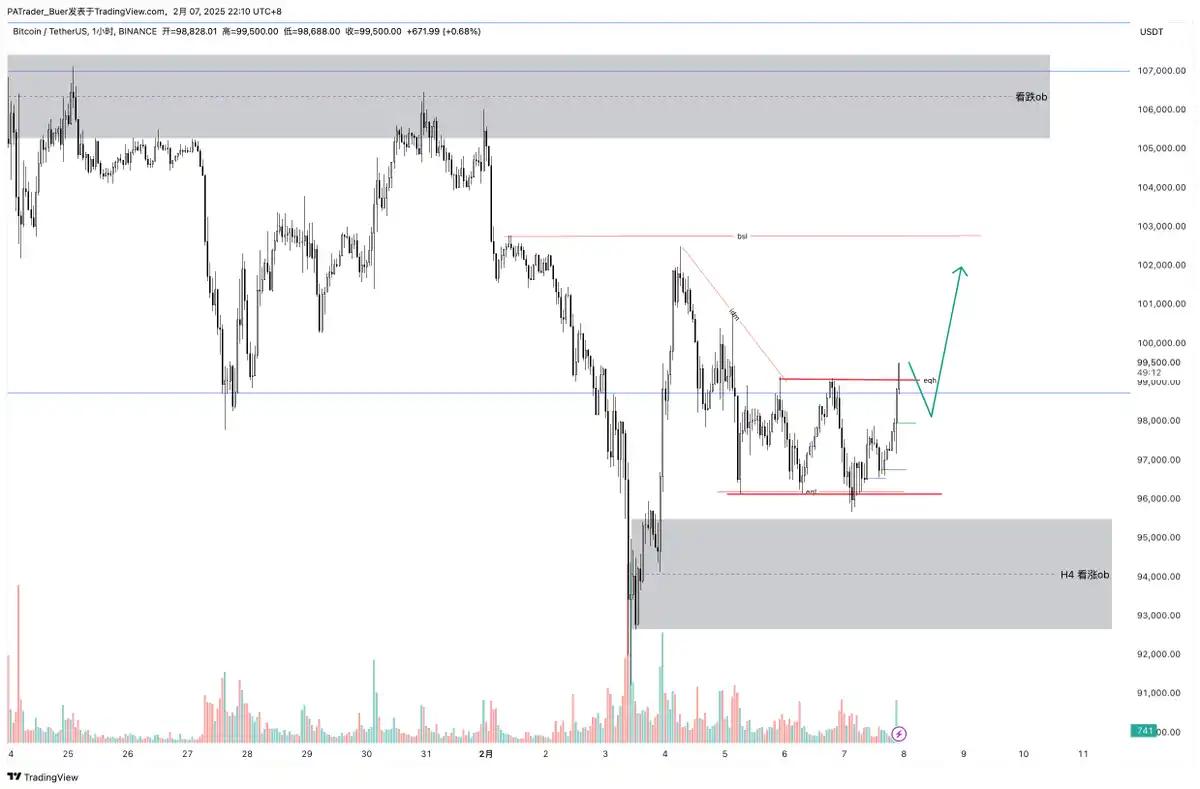
BTC has completed the plunder of eqh. Short sellers, please pay attention to your positions, and longs focus on the opportunity to buy the dip.
Bitcoin is in a sideways market. The market logic is to find liquidity: where the most people are stop-loss and liquidated, that's where Bitcoin will go. Bitcoin's daily candle closed with two long-legged Doji, and the probability of an upward move next week has increased. There is still a possibility of a final downward exploration in the short-term cycle, possibly dropping to around $94,600, and if it regains $95,600+, then the bullish rally will begin. Next week, if it rallies, the target will be at least $100,500, and at most $103,000.
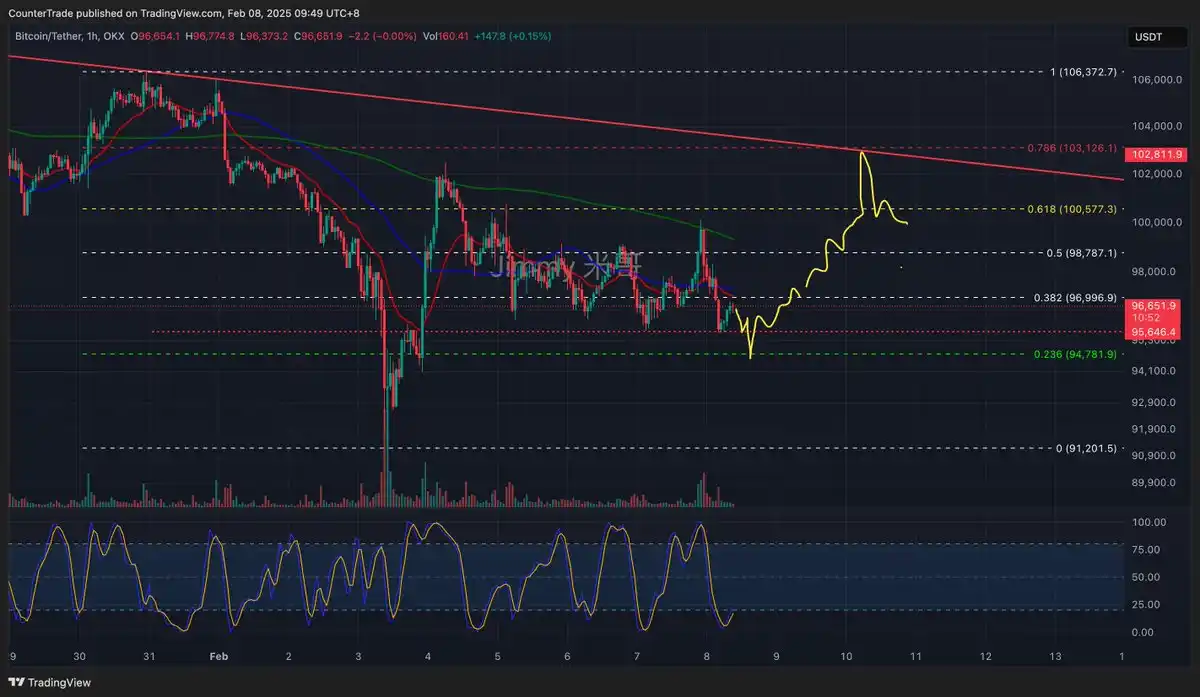
Data Analysis
The largest BTC outflow from exchanges since 2024 just happened, with over 17,000 BTC leaving exchanges, 15,000 of which were from Coinbase, where large whales are purchasing the bottom.
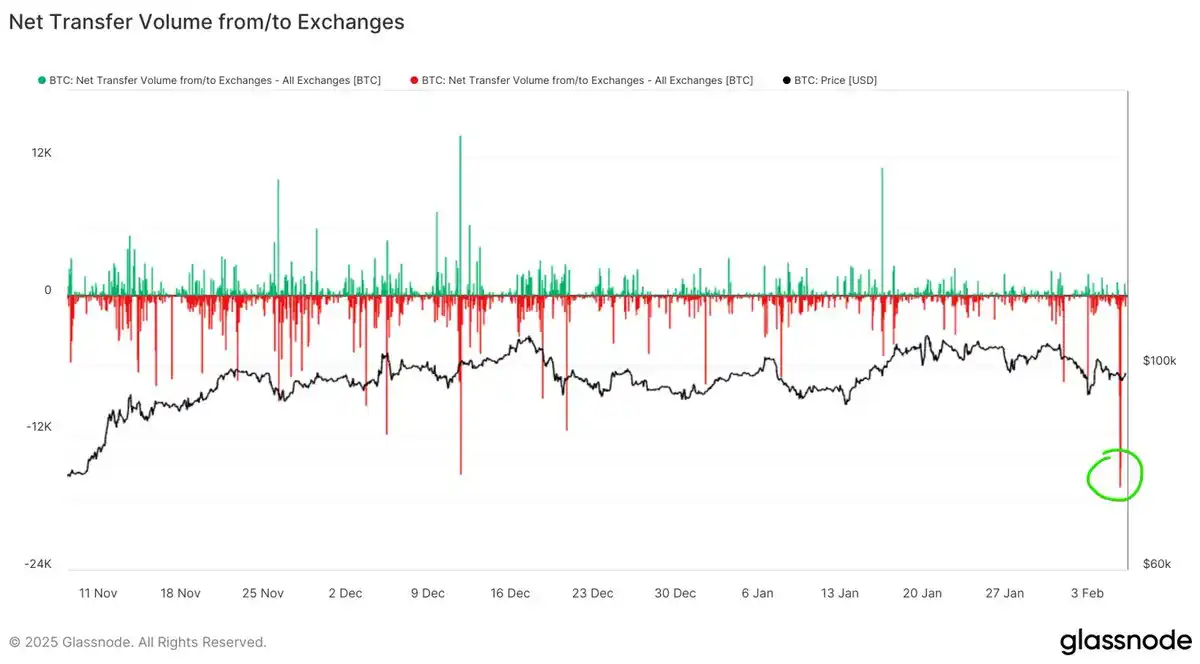
@Phyrex_Ni
The exchange's BTC reserves have indeed plummeted after the price broke below $100,000, almost reaching the lowest point in nearly 6 years, spanning two late periods, indicating that more investors are choosing to hold after buying.
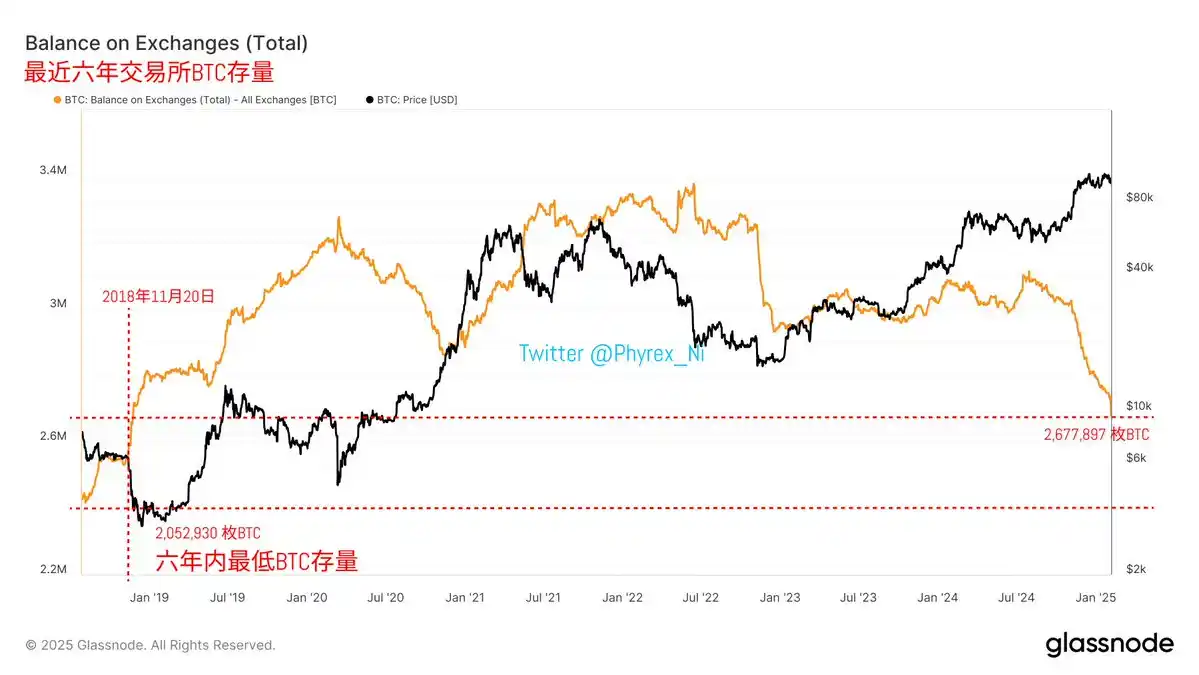
Macro Analysis
The non-farm payroll data was just released. It's basically the same as expected, with the unemployment rate slightly declining to 4%, lower than the previous value. This data is not very good, indicating that the current labor market is still very strong. The non-farm employment number fell significantly, much lower than expected, but this data is still acceptable, with wage growth also accelerating. Overall, the labor market has not shown any obvious cooling, which may not be in line with the expectations of some Fed officials. But it also shows the strength of the US economy.
The possibility of a rate cut in March is almost non-existent. Of course, it never existed in the first place. Now the labor force data will further reduce the probability of a rate cut in March. This is within market expectations. Let's wait and see the dot plot in March. To be honest, the current macroeconomic data is of limited help to the market.
After all, Powell himself said that the focus on the labor market is not very large. It's better to look at the inflation data, especially housing inflation. Overall, today's labor force data is positive for the economy, but negative for the Fed to increase the number of rate cuts.
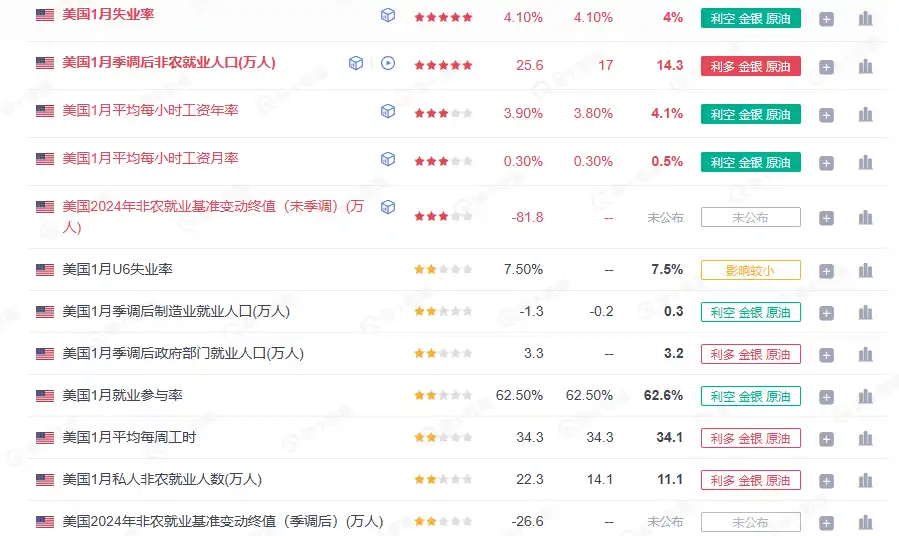
After the data release, Fed's Kashkari gave a speech, the main content of which was the same as Powell's view, "If I see good inflation data and the labor market remains strong, that would lead me to support further rate cuts." Interestingly, this view is completely different from that of Logan, who spoke yesterday, considering a strong labor market a good thing.
The decline in inflation is mainly due to the decline in housing inflation. Kashkari said, "If inflation declines, I don't see why we should keep rates unchanged." And he expects inflation to continue to decline this year, and the Fed's rate cuts will also be moderate.
Basically, the labor force data has been defined as positive for the economy, and the recession is further away.
First, after a week, the BTC market cap has basically remained unchanged, but the market and #ETH Altcoins have shrunk. Through the change in market share, it is clear that BTC has significantly absorbed the market, and its market share has now broken through 58%, approaching 59%. In contrast, ETH's market share has directly fallen below 10%, which is disastrous.
In terms of trading volume, simply put, except for BTC, which still maintains a certain level of activity, ETH Altcoins have basically seen a continued decline in activity and poor sentiment.

In terms of capital, there has been a large increase, with an additional $8.9 billion this week, and the total on-chain stablecoin amount is $231.5 billion.
USDT: The official website shows that the current market cap is $141.355 billion, an increase of $1.951 billion compared to last Sunday. The Asia-Europe market has seen a recovery in inflows this week and has seen an increase in inflows.
USDC: The data website shows that the capital has increased by $2.817 billion, and the US capital has also maintained an inflow increase.
After the employment data was released, BTC accompanied the rebound of the US stock market, but the rise in inflation expectations triggered a decline in the risk market, and this week is likely to end in a decline. The current price is still in a weak area!
After the employment data is released tonight, although the data is not positive, since the downward trend of this week has basically cleared the negative news, as long as it is not negative, the market will rebound again.
After the data release, the market also showed this, with BTC's price breaking through the 1-hour/4-hour range in the short term.
However, the inflation expectations of the University of Michigan immediately triggered concerns about inflation in the risk market, causing the US stock market to fall, and BTC followed suit, directly interrupting BTC's bullish momentum, causing the current BTC price to still be in a weak area.
The unemployment rate has declined, non-farm payrolls are less than expected, and traders are betting on the recovery of the rate cut node, which is currently stuck in June this year, and it doesn't seem very stable. In other words, there is no need to wait for a rate cut in the first 1-2 quarters, and the earliest will have to wait until the mid-June policy meeting.

